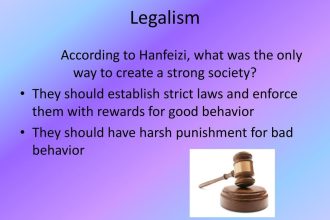Effective CSS rules for SEO are vital for enhancing your website’s visibility and ranking on search engines. Using proper CSS techniques can significantly impact your site’s SEO performance.
By optimizing your CSS code and utilizing relevant tags, you can make your website more search engine-friendly.
From using descriptive class names to reducing code bloat, there are several CSS strategies that can boost your SEO efforts.
Let’s dive deeper into what are the effective CSS rules for SEO and how you can implement them to improve your website’s search engine optimization.
What are the Effective CSS Rules for SEO?
Welcome, young readers, to a fun and exciting journey into the world of web design and search engine optimization (SEO)! Today, we’re going to talk about how Cascading Style Sheets (CSS) can help boost your website’s visibility on search engines like Google. CSS is a powerful tool that not only makes your website look cool but also plays a crucial role in improving your site’s SEO performance. So, let’s dive right in and explore the effective CSS rules for SEO!
The Importance of CSS in SEO
Before we delve into the specific CSS rules for SEO, let’s first understand why CSS is important for optimizing your website for search engines. CSS is used to control the layout, style, and design of your web pages. When search engine bots crawl your website, they rely on the code structure to understand and index your content. By utilizing CSS effectively, you can enhance the readability and accessibility of your website for both users and search engines.
1. Use Semantic HTML Elements
One of the fundamental principles of SEO-friendly CSS is to use semantic HTML elements. Semantic elements like <header>, <footer>, <article>, and <section> provide meaningful structure to your content. By using these elements properly and styling them with CSS, you can help search engines better understand the hierarchy and context of your web pages.
Example:
<header>
<h1>Welcome to My Website</h1>
</header>
By wrapping your website’s header content in a <header> tag and styling it with CSS, you can signal to search engines that this section contains important information about your website.
2. Optimize CSS File Size
Another crucial aspect of using CSS for SEO is to optimize your CSS file size. Large CSS files can slow down your website’s loading speed, which can negatively impact your SEO performance. To ensure fast loading times, minify your CSS code by removing unnecessary spaces, comments, and characters. You can also use CSS preprocessors like Sass or Less to organize and streamline your stylesheets efficiently.
Tools for CSS Optimization:
- CSS Minifier
- AutoPrefixer
- PurgeCSS
By keeping your CSS files lightweight and well-structured, you can improve your website’s performance and make it more search engine-friendly.
3. Implement Responsive Design
In today’s digital age, having a mobile-friendly website is essential for SEO success. With the increasing use of smartphones and tablets, search engines prioritize websites that offer a seamless user experience across all devices. By using CSS to create responsive design elements, you can ensure that your website looks great and functions well on any screen size.
Media Queries for Responsive Design:
@media only screen and (max-width: 600px) {
body {
font-size: 14px;
}
}
With media queries in CSS, you can set specific styling rules for different screen sizes, making your website adaptive and user-friendly on mobile devices.
4. Optimize Image Display with CSS
Images play a significant role in enhancing the visual appeal of your website, but they can also impact your SEO performance if not optimized correctly. By using CSS properties like background-image and background-size, you can control how images are displayed on your web pages, reducing the load time and improving user experience.
Image Optimization Example:
.my-image {
background-image: url('image.jpg');
background-size: cover;
}
By setting the background-size property to cover, you can ensure that the image fills the entire container without distorting its aspect ratio, creating a visually appealing design while maintaining optimal loading speed.
5. Enhance User Experience with CSS Transitions and Animations
CSS transitions and animations can add interactivity and engagement to your website, making it more appealing to users. By incorporating subtle animations for hover effects, button interactions, or page transitions, you can create a memorable user experience that encourages visitors to explore your site further.
Example of CSS Animation:
.my-button {
transition: background-color 0.3s ease;
}
.my-button:hover {
background-color: #ff5733;
}
With CSS transitions, you can smoothly animate style changes, such as color shifts, providing visual feedback to users and enhancing the overall user experience on your website.
Congratulations, young designers and future SEO experts! You’ve now learned about the effective CSS rules for SEO and how they can help improve your website’s visibility and performance on search engines. By implementing semantic HTML elements, optimizing CSS file size, creating responsive designs, optimizing image display, and enhancing user experience with CSS animations, you can take your web design skills to the next level and boost your site’s SEO ranking. Keep practicing, experimenting, and exploring new ways to leverage CSS for SEO success. Happy coding!
Remember, the key to mastering CSS and SEO is to stay curious, creative, and always strive to learn and grow. With dedication and perseverance, you can become a rockstar web designer and SEO guru in no time. Keep coding and creating amazing websites that not only look fantastic but also rank high on search engine results pages. The world is your digital playground – so go ahead, explore, experiment, and unleash your creativity with CSS and SEO!
SEO In 5 Minutes | What Is SEO And How Does It Work | SEO Explained | SEO Tutorial | Simplilearn
Frequently Asked Questions
What role do CSS rules play in SEO?
CSS rules can impact SEO by affecting how search engines interpret and index a website’s content. This includes influencing the site’s loading speed, mobile responsiveness, and overall user experience, which are key factors in search engine ranking algorithms.
How can using semantic HTML tags improve SEO over CSS rules?
While CSS rules can help style a website, using semantic HTML tags appropriately can enhance SEO by providing clearer structure and context to search engines. This can lead to better understanding of the content and improved ranking in search results.
Are there specific CSS rules that are particularly effective for SEO purposes?
Yes, some effective CSS rules for SEO include optimizing image sizes to improve load times, using responsive design for better mobile performance, and ensuring clean and organized code for search engine readability. Additionally, using CSS to implement proper heading hierarchy and avoiding keyword stuffing in styles can benefit SEO.
Final Thoughts
In conclusion, when considering SEO for your website, it’s crucial to optimize your CSS effectively. Utilize clean and concise code to improve page loading speed. Prioritize mobile responsiveness by using media queries. Implement keywords strategically in class and ID names, enhancing search engine visibility. Remember, adhering to best practices in CSS directly impacts search engine rankings. So, what are the effective CSS rules for SEO? Focus on speed, responsiveness, and keyword optimization for optimal results.






